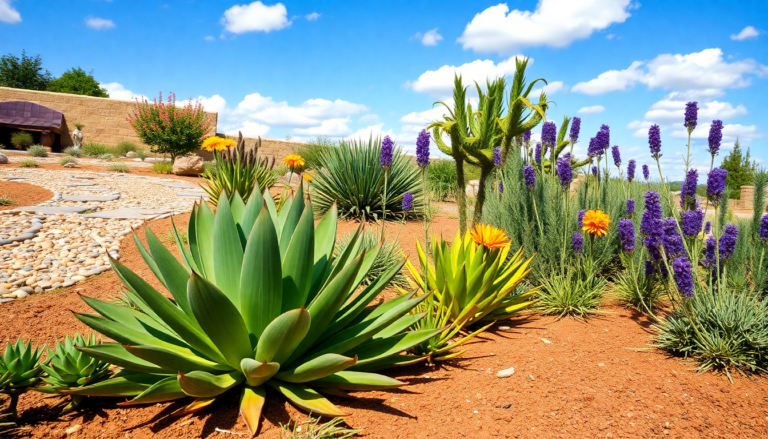Argomenti trattati
In an era where climate change and water conservation are at the forefront of our minds, the idea of creating a drought-tolerant garden is more relevant than ever. These gardens not only require less upkeep, but they also play a vital role in benefiting the environment. By carefully selecting plants that flourish with minimal water, homeowners can enjoy stunning landscapes that are both sustainable and resilient. So, how do you embark on this journey toward a drought-tolerant garden? It all starts with understanding the right plant choices and optimizing their growth conditions.
What Are Drought-Tolerant Plants?
Drought-tolerant plants are specially adapted to survive in conditions where water is hard to come by. These tough species boast deep root systems, which allow them to tap into moisture lurking deeper within the soil. If you live in a hot, dry climate, choosing plants that are native to your area can significantly boost the success of your garden. Local extension services can be a treasure trove of information about which species will thrive in your specific region.
From my experience at Google, I’ve learned that understanding the local ecosystem is absolutely crucial. The data tells an interesting story about how certain plants not only survive but actually thrive under drought conditions. Take lavender, for example. With its enchanting fragrance and vibrant blooms, it’s a favorite among gardeners seeking both beauty and resilience. Once established, lavender flourishes in well-draining soil and requires very little watering, making it an ideal choice for any drought-tolerant garden.
Case Studies: Success Stories in Drought-Tolerant Gardening
Let’s explore some successful case studies that demonstrate the effectiveness of drought-tolerant gardening. One standout example comes from a community project in California, where residents transformed their traditional lawns into xeriscapes. By swapping out high-water-use plants for native succulents and ground cover, they slashed their water consumption by an impressive 50% while boosting local biodiversity.
The metrics from this initiative revealed a significant drop in maintenance costs as well. Homeowners reported spending less time on watering and lawn care, allowing them to enjoy their outdoor spaces to the fullest. The environmental benefits were equally notable, as the project attracted beneficial wildlife and pollinators, ultimately enriching the local ecosystem.
Another inspiring case involved a homeowner who turned a small yard into a sanctuary for drought-tolerant plants. By incorporating resilient species like yarrow and coneflowers—known for their deep roots and stunning blooms—the garden transformed into a vibrant, sustainable space. Not only did these plants provide visual appeal, but they also attracted butterflies and bees, enhancing the garden’s ecological balance.
Practical Tips for Creating Your Drought-Tolerant Garden
Implementing a drought-tolerant garden is about more than just picking the right plants; it requires strategic planning. Start by assessing your garden’s layout and soil type. Consider using layering techniques, such as placing taller species at the back and shorter ones at the front, to create depth and interest while ensuring all plants receive adequate sunlight.
Don’t overlook mulching! This essential practice can significantly benefit your drought-tolerant garden. A layer of mulch helps retain moisture in the soil, reduces evaporation, and suppresses weeds. Not only does this technique conserve water, but it also fosters a healthier growing environment for your plants.
Regularly monitoring soil moisture and plant health is vital for your garden’s success. By using tools like soil moisture meters, you can make informed decisions about your watering schedule. This data-driven approach minimizes water usage and promotes sustainable gardening practices.
Key Performance Indicators to Measure Success
To measure the effectiveness of your drought-tolerant garden, there are several key performance indicators (KPIs) to keep an eye on. Start by tracking your water usage before and after implementing drought-tolerant strategies to quantify your savings. Additionally, observing plant health and growth rates can provide valuable insights into the success of your garden design.
Another important metric is biodiversity. The presence of pollinators and beneficial insects can be a strong indicator of a thriving ecosystem. Documenting the variety of species that call your garden home can help you assess its ecological impact and resilience.
In conclusion, creating a drought-tolerant garden is not just a rewarding endeavor; it’s a step toward fostering sustainability. By understanding your plant choices, analyzing local conditions, and applying best practices, you can cultivate beautiful landscapes that thrive on minimal water. The data-driven insights from these successful case studies further reinforce the benefits of this approach, proving that beauty and sustainability can coexist harmoniously. Ready to dig in?

